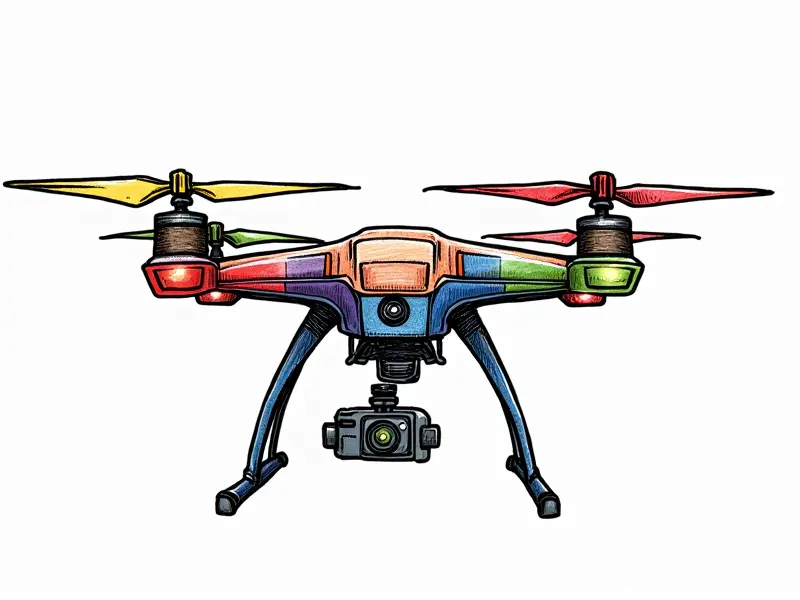How do drones record video?

Mastering Drone Cinematography Basics
Drones have revolutionized the way we capture aerial footage, offering unparalleled perspectives and dynamic shots that were once reserved for expensive helicopters. To get started with drone cinematography, it's essential to understand the basics of flight control and camera operation. Familiarize yourself with your drone’s remote controller and its various functions such as pitch, roll, yaw, and throttle. Additionally, learn how to adjust the gimbal settings to stabilize your footage.
Best Settings for Drone Video Quality
The quality of your drone video largely depends on the camera settings you choose. Optimal settings vary depending on the model, but generally, it's recommended to shoot in 4K resolution with a high bitrate and frame rate (e.g., 30 fps or higher). Adjusting ISO levels can also impact image clarity; aim for lower ISO values to minimize noise. Experiment with different aperture settings to control depth of field and achieve the desired focus.
How to Capture Smooth Drone Footage
Capturing smooth, stable footage is crucial in drone cinematography. Utilize your drone’s built-in stabilization features such as electronic image stabilization (EIS) or mechanical gimbal stabilization. Fly at a steady altitude and avoid sudden movements that can cause jarring shots. Practice flying in different wind conditions to understand how it affects stability.
Essential Gear for Stunning Drone Videos
- Drones: Choose models with high-resolution cameras, long battery life, and advanced stabilization features.
- Batteries: Carry extra batteries to ensure continuous filming without interruptions.
- Memory Cards: Use fast SD cards with large storage capacity for seamless video recording.
- Lens Filters: Protect your camera lens from scratches and dust using UV or polarizing filters.
Understanding Resolution in Drone Cameras
The resolution of a drone camera determines the level of detail captured in each frame. Common resolutions include 1080p, 4K, and even higher for professional models. Higher resolutions provide more pixels per inch, resulting in sharper images with better clarity when zooming in or cropping.
Editing Tips for Drone Shot Videos
Post-processing is crucial to enhance the visual appeal of your drone footage. Use video editing software like Adobe Premiere Pro or Final Cut Pro to adjust color grading, add transitions and effects, and stabilize shaky shots. Pay attention to audio quality by adding background music or sound effects.
Maximizing Battery Life While Filming
To extend battery life during filming sessions, avoid flying at high altitudes where the drone consumes more power due to increased air resistance. Optimize your flight path to cover all desired areas efficiently without unnecessary maneuvers. Also, ensure that you start with fully charged batteries and carry spares.
Drone Camera Techniques for Beginners
Beginners should practice basic shooting techniques such as the dolly zoom (zooming in while flying back) and the tracking shot (following a moving subject). Experiment with different angles and perspectives to add variety to your footage. Always prioritize safety by staying within legal flight zones.
Aerial Photography with Your Drone
Drone photography offers unique opportunities for capturing stunning landscapes, architecture, and events from above. Focus on composition principles like the rule of thirds and leading lines to create visually appealing images. Pay attention to lighting conditions; golden hour (dawn or dusk) provides soft, warm light ideal for dramatic shots.
Secrets of Professional Drone Filming
To achieve professional-grade drone footage, invest in high-quality gear and software tools. Collaborate with other filmmakers to exchange ideas and techniques. Stay updated on the latest advancements in drone technology and camera capabilities. Always prioritize safety and adhere to local regulations.
Legalities of Drone Video Recording
Before flying your drone for video recording, familiarize yourself with local laws and restrictions regarding airspace usage, privacy concerns, and no-fly zones. Obtain necessary permits if required by authorities. Respect the rights of individuals and property owners when filming in public spaces.
Conclusion
Mastery of drone cinematography requires a combination of technical knowledge, creative vision, and adherence to legal guidelines. By understanding the basics of flight control, optimizing camera settings, and utilizing essential gear, you can capture stunning aerial footage that captivates your audience. Remember to prioritize safety and respect privacy laws to ensure ethical and responsible filming practices.

